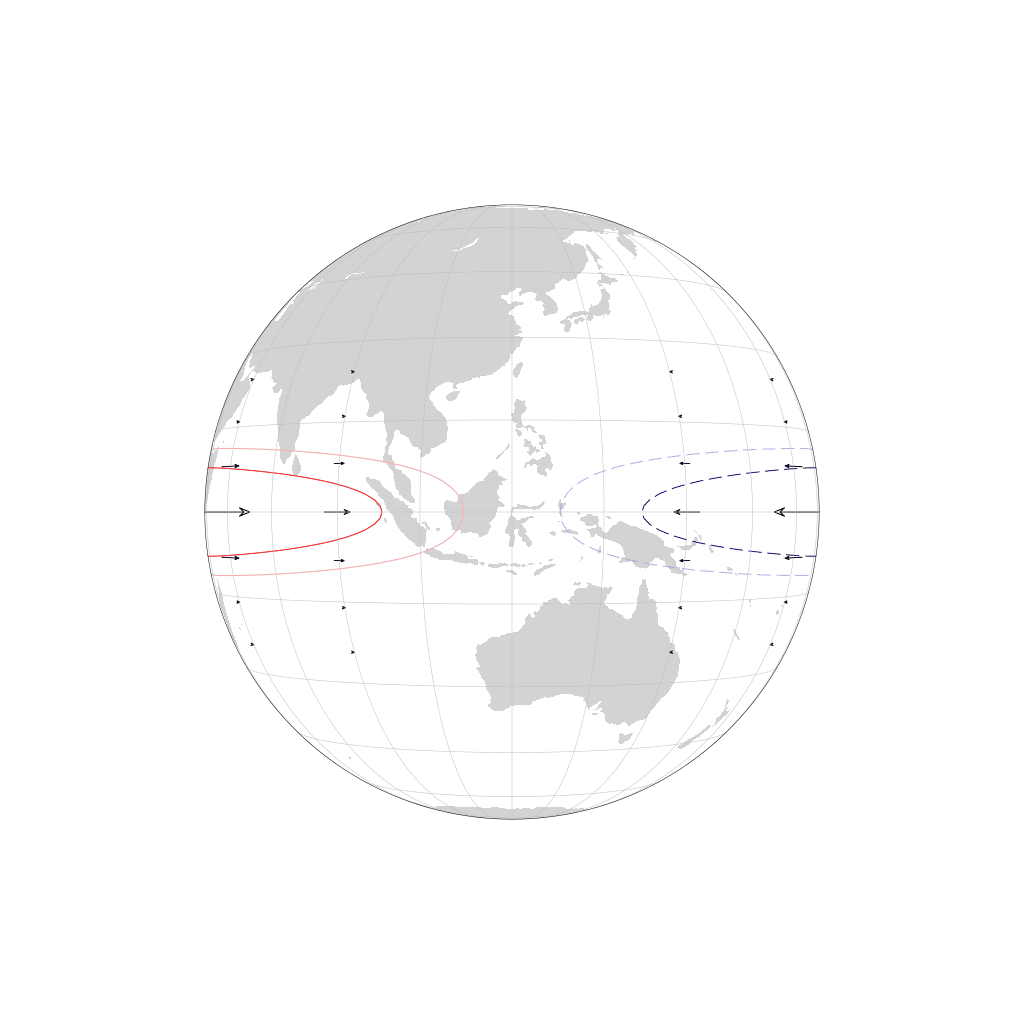Research about Madden–Julian oscillation (MJO)

The MJO’s intraseasonal period has remained elusive across theories. My recent work offers a minimal explanation using equatorial Kelvin waves with planetary wavenumber 1. Through a scale analysis requiring only three geometric assumptions, I show that this wave structure intrinsically produces MJO-like periods of 36–64 days (Ong, 2025). This minimal model offers a physical-based pathway to improve subseasonal forecasts.
